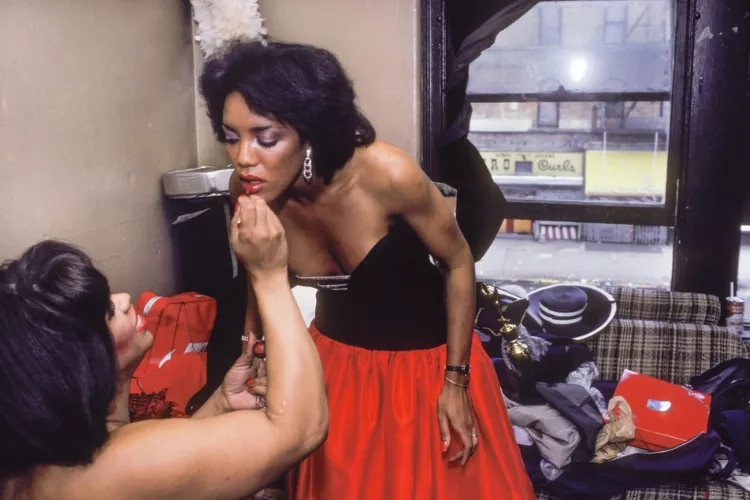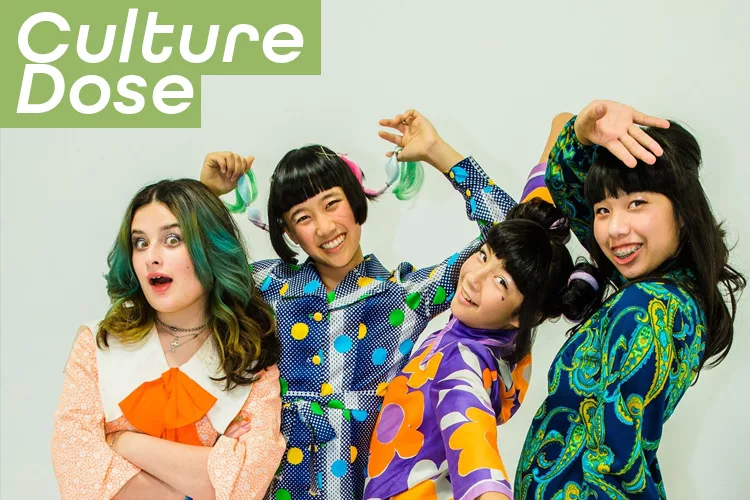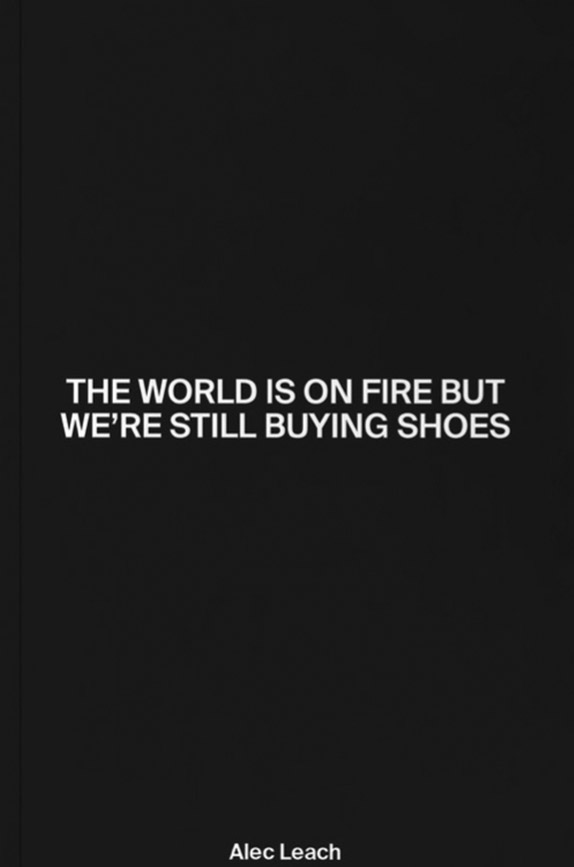
The World is On Fire But We’re Still Buying Shoes comes from highsnobiety former editor Alec Leach. In this manifesto on over consumption, he maps out the journey towards a better relationship with fashion. At a pocket-sized 144 pages, the book is equipped with infographics, diagrams, and pull quotes on conscious consumption in a bite-sized, easily digestible format.
We recommend you purchase this book from Leach’s website, and share it with your friends and family when you’re done. Or, if you want some of our main takeaways from the both informative and relatable book, keep reading.
1. We See What We Want to See

We buy clothes to reflect our own hopes and dreams, and in doing so we fail to recognize the immense destruction being done behind the curtain.
Leach affirms that fashion is intimately connected to our sense of self. We buy clothing in hope of somehow reframing ourselves to further open up our lives and our stories. Shopping instills a sense of optimism – we use it as a way of reimagining who we can be, and how we appear to others. We’re lured in by the mirage of happiness reflected to us in the ads on our phones. It’s easy to feel as though buying will fix our problems, help distract us from things we cannot control. But by embracing the mentality that buying = problem solving, we are stepping into a relentless cycle of consumption that will never be satiated.
In addition to the escapism shopping offers, there is denial.
This is the most dangerous game we play. We focus on ourselves when buying, and in doing so often fail to remember the impact our purchases have on the environment, the people making the clothes, and all the other havoc the fashion industry wreaks on the planet. And that’s how companies want it – selling things to consumers who know exactly how their garment was produced would be much more difficult to do. Leach dives further into the deceitful nature of “sustainability”, so even if we try to see, we may not be told the whole truth (more on this in takeaway 3 ;)).
2. Creating a relationship with your clothes will lead to far less impulse/meaningless purchases
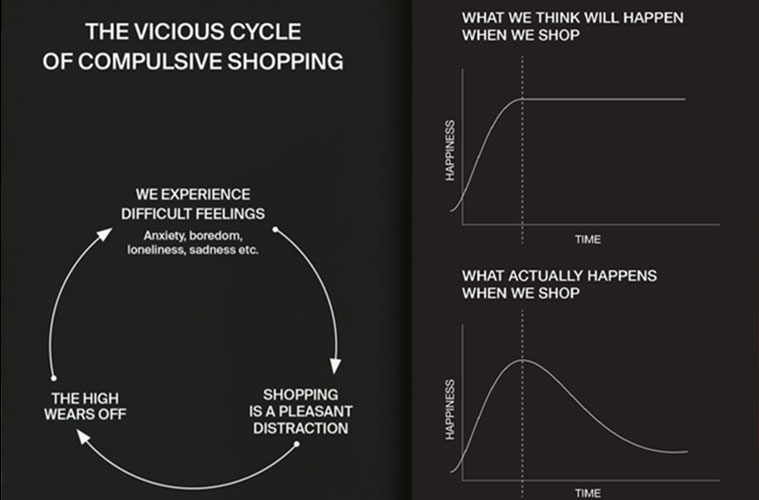
This takeaway is by far my favorite, and a way of shopping that everyone can adopt. In the age of digital media, relentless trend cycles, and shopping as a means to “cure” your mental health, the temptations of impulse buying loom larger than ever.
We mistakenly associate new clothes with a restored sense of self worth – an ‘if only I had this skirt, then I’d be happy’ kinda thing. This ultimately leads to a closet full of things we have no connection to, and in some cases, don’t even like. Leach talks about how the accumulation of useless or impulse purchases ultimately imposes an emotional heaviness on us. Our possessions undoubtedly make us feel something (whether it’s joy, guilt, weariness, fear, or a mix of many of these), and with hundreds of thousands of possessions we are bearing the weight of these things at once.
Shopping must be viewed as a relationship, as something that gives but also takes.
We should only let things into our lives that are going to be good for us. Therefore, we must value the things we buy; if they’re going to take up a place in our lives, then they should truly be worthy of that space.
3. Know What Sustainability Isn’t
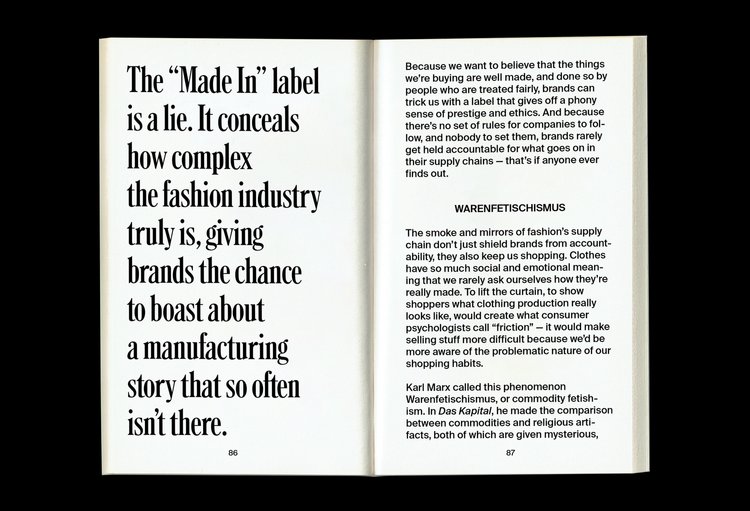
The myth of “Made In ____” labels, and how companies may write their own “sustainability story” without action behind the words.
Sustainability is a word we hear a lot these days, and the pressure on businesses to clean up their acts and take environmental responsibility is real. However, as Leach describes it, ‘sustainability’ has also become a way for Big Fashion to preserve their image and make products seem less problematic than they really are. Somewhere along the way, the solution to the problems of careless consumption came to be more shopping. Brands often make unverified claims the basis of their “sustainable” products, which makes it difficult as a consumer to know what to believe.
The “Made In _____” label, for instance, is what many of us use to determine whether a garment is ethically made or not. The reality is that it’s often much more complicated, since supply chains are so insanely complex.
A “Made in USA” tag, for instance, is read by many as a stamp of an ethical garment – fairly paid workers and eco-friendly textiles. More often than not though, that garment, while sewed in the USA, was likely made from textile dyed in Bangladesh, cut in China, spun into fabric in Vietnam, and grown in India (or a similar trajectory). Fast fashion companies have come to rely on these labels as a way of appearing more committed to ethical practices than they actually are.
4. Put Yourself in the Driver’s Seat
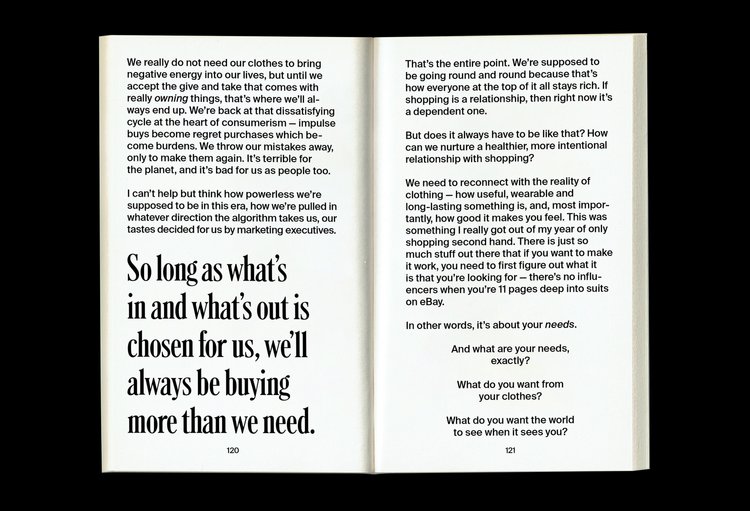
Do not be swayed by marketing tactics and trend cycles, know what you like and be intentional about what you wear/buy.
Clothing ultimately costs us both time and money. The act of shopping may be gratifying in the moment, but often leads to post-purchase feelings of self-loathing and regret. We must accept the push and pull dynamic that owning things requires. In this era of rapid consumption, we are programmed to feel powerless, pulled in any direction the algorithm takes us.
We can avoid this by being mindful in our purchases – thinking them through and evaluating how these pieces make us feel, and why. Moreover, personal style allows us to invest in ourselves, rather than investing in who someone else is telling us to be. It is about celebrating that style as a means for self-expression.
5. Nobody’s Perfect
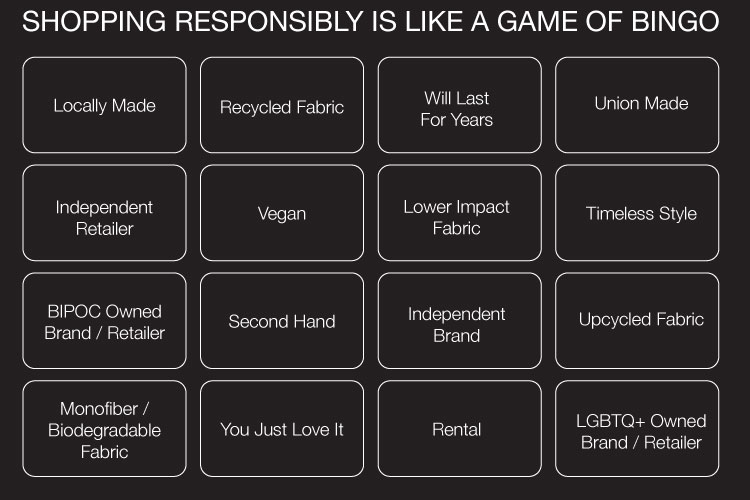
There is no clear cut solution to the issue of excess consumption, but there is a mindset and consciousness we can adopt to pave the way for better habits.
It’s easy to get overwhelmed by the mass of information about the impact of fashion and shopping has on climate change, greenhouse gas emissions, landfills, unethical labor, the list goes on. And these are important things to be aware of. However, it is also important to know that as a consumer it is impossible to be a perfect shopper, or 100% sustainable all the time. But it is possible to be a conscious consumer, who shops for things that express their personal style, rather than shops for trends simply for the sake of being on trend. To be intentional with purchasing decisions, we need to take the time to think about whether the item in question will hold a valuable space in our lives. Also, embrace vintage, embrace thrift, try to participate in slow fashion and do research on company practices! Shopping shouldn’t be a mindless pastime.
In the end no one is perfect, but we can all try to be a little better, and feel better for it.
-By Caroline Jenkins
Related Articles
5 Best Books on Climate and Consumerism
10 Sustainable Fashion Terms to Familiarize Yourself With
What is Minimalism? Not What You Might Think!
Influencer’s need to stop fast fashion hauls
Make it last: 3 ways to properly care for your footwear



